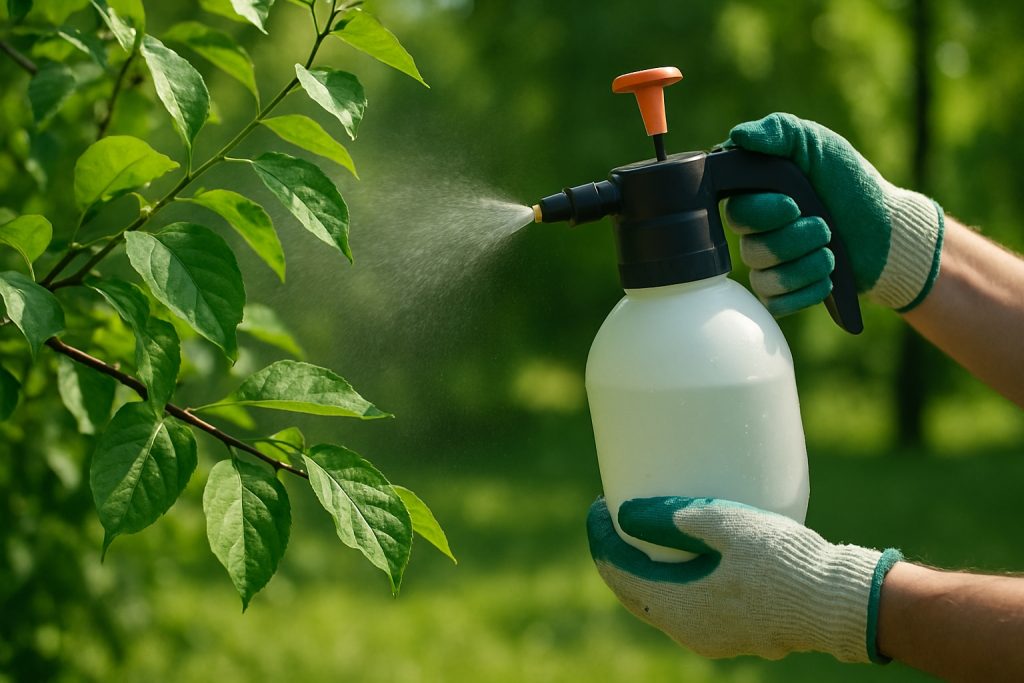Tree Disease Treatment in Swarthmore, PA
Revive, Protect, and Preserve Your Landscape’s Natural Legacy
In Swarthmore, where mature trees line quiet neighborhoods and shaded lawns are a point of local pride, the health of your trees isn’t just about curb appeal—it’s about protecting the integrity and safety of your entire property. When trees begin to show signs of decline, whether it’s thinning foliage, unusual bark texture, or spreading dieback, these could be indicators of a deeper biological threat. Diseases don’t wait. They creep, expand, and eventually take hold of even the sturdiest oaks and maples. Acting quickly with expert treatment not only restores your tree’s health—it safeguards your investment in the land around your home.
Why Tree Disease is Especially Problematic in Swarthmore
Swarthmore’s climate and soil composition provide an ideal environment for a wide range of tree species—but they also create a breeding ground for certain pathogens and pests. Warm, damp summers followed by cold, wet winters allow fungal diseases like anthracnose and root rot to thrive. Similarly, insect activity—particularly from boring beetles or scale insects—can accelerate decay in already stressed trees. In a community where dense greenery and interconnected canopies are the norm, one diseased tree can easily affect others nearby if not addressed.
Mature neighborhoods such as those near Swarthmore College or Crum Woods are particularly susceptible due to the high density of older trees. These trees, while beautiful, often have established vulnerabilities that require close monitoring. Ignoring symptoms for a single season can mean losing decades of growth.
Subtle Symptoms That Shouldn’t Be Ignored
Not all signs of tree disease are dramatic. In fact, most begin quietly:
-
Leaves may yellow or curl out of season
-
Bark might darken or flake off in odd patches
-
Branch tips may die back from the ends inward
-
Fungal growth or sap bleeding from the trunk may appear
-
Canopy density may slowly diminish year over year
When these signs occur, they’re often dismissed as seasonal quirks. But these early indicators are often the best opportunity to intervene successfully. Once a disease progresses to the root system or spreads across multiple limbs, the treatment window narrows significantly.
What to Expect from a Professional Tree Disease Evaluation
When a certified arborist arrives for a tree health assessment, they’re not just looking at what’s visible. A comprehensive diagnosis goes beyond leaf discoloration or insect presence. It includes evaluating soil pH and moisture content, inspecting root flare integrity, identifying signs of bacterial invasion or fungal colonization, and determining the tree’s species-specific susceptibilities.
Our specialists will also assess how environmental factors—shade patterns, nearby plant competition, drainage issues—may be contributing to your tree’s declining condition. Treatment recommendations could include targeted fungicide injections, trunk sprays, soil amendments, or deep root feeding to restore lost nutrients and promote recovery. Each protocol is selected based on the exact stage and type of disease, and always with the tree’s long-term vitality in mind.
Proactive Strategies for Long-Term Tree Health
In Swarthmore, one of the most effective ways to protect your trees from disease is to prevent infection in the first place. Homeowners can make a meaningful impact by:
-
Keeping mulch rings neat and away from the trunk
-
Avoiding mechanical injuries from lawn equipment
-
Scheduling seasonal inspections, especially in early spring and fall
-
Ensuring adequate airflow between trees and shrubs to reduce moisture buildup
-
Choosing appropriate fertilization strategies rather than relying on generic lawn treatments
Just like any living organism, trees respond to care. When they receive attentive, informed maintenance, they’re far less likely to fall prey to the region’s most aggressive diseases.
When It’s Time to Act—and Why Delay is Costly
It’s easy to put off tree care, especially when the signs of disease seem minor. But waiting until damage becomes visible from the street usually means it’s already widespread beneath the bark. This delay can lead to branch failure, complete canopy collapse, or costly removals that could have been avoided with timely treatment.
If you’re noticing changes in your trees—subtle or obvious—now is the time to schedule a professional evaluation. Each season brings new challenges for trees in Swarthmore, and the earlier issues are addressed, the greater the chance of full recovery.
Secure Your Property’s Green Future with Expert Tree Care
Your trees are more than decoration—they’re living assets that define the look and feel of your home. In a place like Swarthmore, where natural beauty is such a vital part of the community’s charm, maintaining healthy trees is both a personal and environmental responsibility. Let skilled arborists assess, treat, and preserve what your landscape has worked so long to grow.
Don’t wait for signs of distress to become irreversible damage. Reach out today to schedule your consultation and take the first step toward restoring your trees to full health. Our schedule fills quickly during peak disease seasons—secure your treatment date now by calling or submitting your request through our online form. Your trees will thank you for it.


